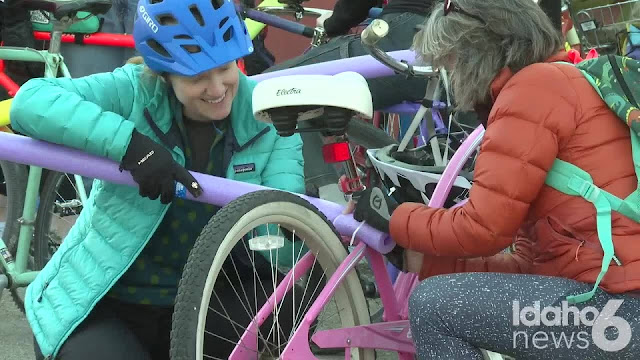In 1982 Idaho passed a law allowing cyclists to, in essence, to treat a red light as a “Stop” sign and a “Stop” sign as a “Yield” sign. This piece of legislation made cycling both safer and more efficient: It allowed cyclists to proceed through intersections ahead of turning vehicles and to keep up their rhythm.
At the time the law—now commonly called the “Idaho Stop”—was enacted, it was went almost unnoticed. That may have to do with the fact that the Gem State was, and is, one of the least-populated in the USA. Also, I suspect that there weren’t many transportation or even recreational cyclists there four decades ago. I haven’t been there, but I suspect that most adult cyclists were passing through (and enjoying the scenery) as part of an inter-state or transcontinental tour.
Ironically, planners and legislators finally took notice of a law passed in a mostly-rural state when current “bicycle culture “ developed about 25 to 30 years later, when jurisdictions from Portland, Oregon to Paris, France adopted versions of it.
Now, one has to wonder whether the “Idaho Stop” will survive in its namesake state.
Boise, the state’s largest city, is part of Ada county. Its highway district (ACHD) currently consists of five commissioners, all elected. Cyclists seem satisfied with the arrangement. The cynic in me says that’s the reason why there’s a bill moving through the state legislature that would add two new commissioners—one appointed by the governor, the other by the commissioners themselves.
Some in the local cycling community fear that the law, if passed, could tilt the ACHD in tonmore anti-bike position and stall, or end, bicycle infrastructure creation and improvement.
While a governor’s appointment might not seem to have much immediate impact, there is fear that it could have outsized influence on the current commissioners and the election of future commissioners. Such a fear is not unfounded in one of the most Republican—and pro-Fake Tan Führer—states in the nation. While previous Republican lawmakers in the state and nation seemed to take a laissez-faire attitude toward cycling and cyclists, too many current party leaders (and members), taking their cues from FTF, are openly hostile to us.
I just hope the “Idaho Stop” won’t be stopped—in the place of its birth or anywhere else.

